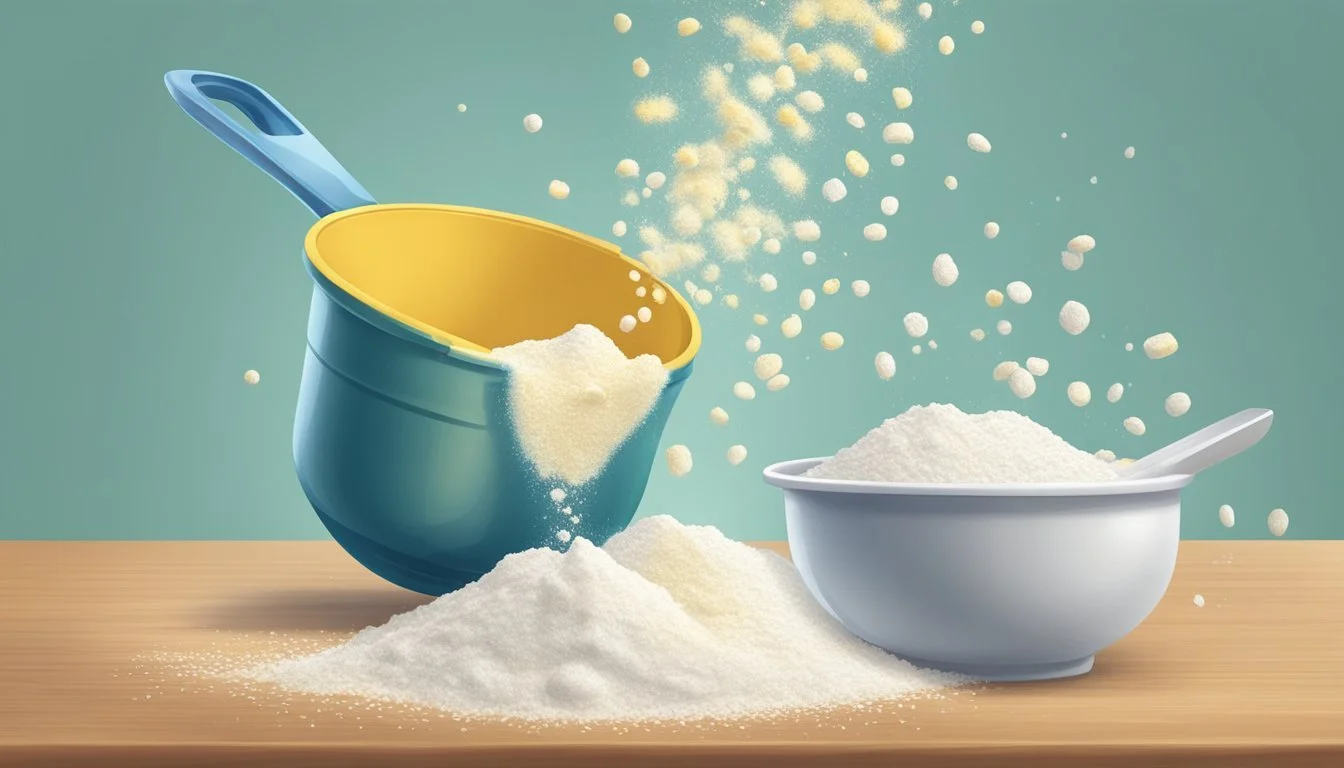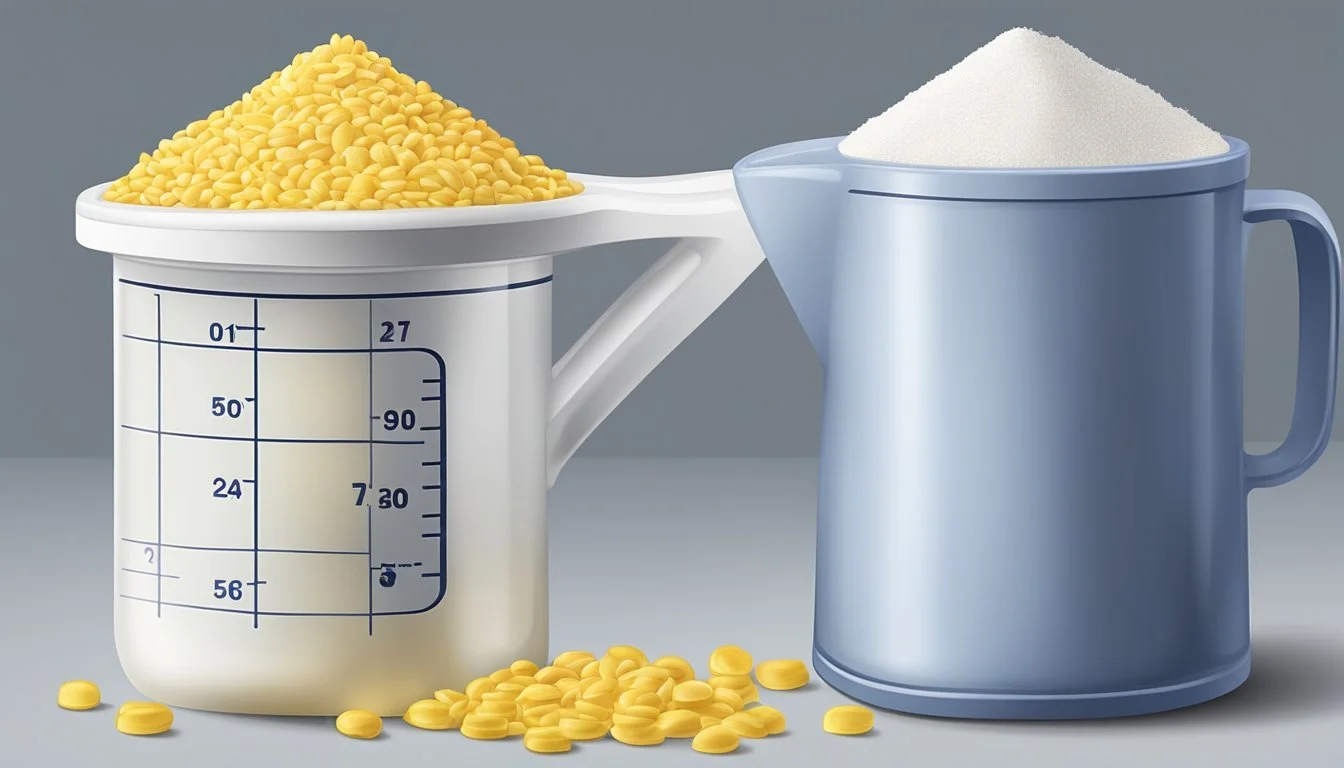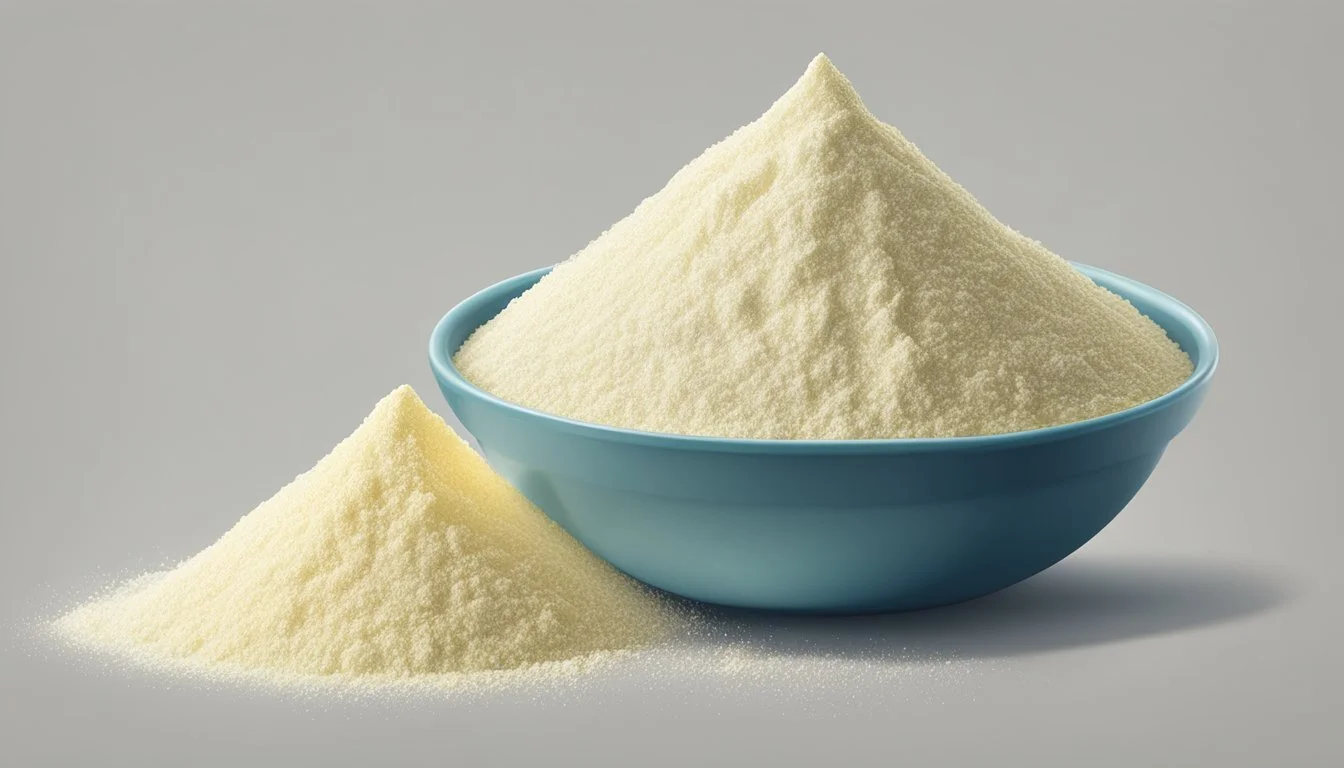How Many Tablespoons in a Pound of Cornstarch
Converting Weights to Measures
When it comes to kitchen conversions, knowing how much of one ingredient equals another in terms of volume or weight can be crucial for the success of a recipe. Cornstarch, a common thickening agent, is often measured in tablespoons when following a recipe, but it may also be bought or utilized in larger quantities measured in pounds. The conversion between weight and volume is not straightforward, since it depends on the density of the ingredient in question. However, for cornstarch, there are established equivalents that allow cooks to accurately convert between these two measurements.
To understand the conversion, it's important to recognize that a pound is a unit of weight, while a tablespoon is a unit of volume. Typically, one pound of cornstarch is equivalent to roughly 30.6756 times the ingredient's density in tablespoons. Since cornstarch is a fine powder with a consistent density, this conversion generally remains reliable. This knowledge becomes quite useful when scaling recipes up or down or when purchasing ingredients in bulk but cooking in smaller quantities.
With the correct information and a simple calculation, converting pounds of cornstarch to tablespoons—or vice versa—is straightforward. This allows for precise measurements and consistency in cooking and baking, ensuring that dishes achieve the desired texture and thickness. In the realm of culinary arts, such conversions are integral to adapting recipes and ensuring that each dish is a success.
Understanding Measurements in Cooking
In cooking, precision is non-negotiable as it ensures the desired outcome in both taste and texture. Measurements are fundamental, acting as the language for replicating recipes accurately.
Importance of Accuracy
Accuracy in measuring ingredients like cornstarch is crucial because it affects the consistency and behavior of food during cooking. For instance, too much cornstarch could result in a dish that's undesirably thick or gloppy, while too little could fail to thicken a sauce to the right consistency. These disparities highlight why understanding and applying accurate measurements is indispensable.
Weight vs. Volume:
Weight measures the heaviness of an ingredient, often regarded as more precise for dry ingredients.
Volume measures the space an ingredient occupies, more common for liquids and sometimes for dry ingredients.
Types of Measurement Units
Different units are used to quantify cooking ingredients and these fall into two primary categories: weight units and volume units.
Weight Units (unit of mass):
Ounces (oz)
Pounds (lb)
Grams (g)
Kilograms (kg)
Volume Units (volume unit):
Teaspoons (tsp)
Tablespoons (tbsp)
Fluid ounces (fl oz)
Cups (c)
Pints (pt)
Quarts (qt)
Liters (l)
A pound of dry food, like cornstarch, is typically measured using weight units, while tablespoons are a volume unit. The conversion from weight to volume requires an understanding of the specific ingredient's density.
Units of Weight and Volume
In the realm of cooking and baking, precise measurements are critical. The section below outlines the specific units of weight and volume commonly used, illustrating their conversions and relationships in the context of converting a pound of cornstarch into tablespoons.
Pounds, Ounces, and Grams
Pounds (lb) are used predominantly in the United States to measure weight, and one pound equates to 16 ounces (oz). In a more universal context, weight can also be measured in grams (g), where one pound is approximately 453.592 grams. This unit of weight is often used on scales for measuring various ingredients accurately.
1 pound = 16 ounces
1 pound = 453.592 grams
1 ounce = 28.35 grams
Tablespoons, Cups, and Milliliters
When measuring volume, tablespoons (tbsp) are a common unit, especially in culinary applications. A single US tablespoon is equivalent to about 14.79 milliliters (mL). Larger volumes are commonly expressed in cups, with one cup being equal to 16 tablespoons. For scientific and international recipes, milliliters provide a metric unit of volume.
1 US tablespoon = 14.79 milliliters
1 cup = 16 US tablespoons
1 milliliter = 0.06763 US tablespoons
The conversion between weight and volume requires knowledge of the substance's density. For cornstarch, a pound (453.592 grams) translates to approximately 60.5 US tablespoons, due to cornstarch's density of about 0.7 grams per milliliter. Knowing this, a scale can be used to measure the weight precisely, and the corresponding volume can be determined accurately for recipe requirements.
Converting Pounds to Tablespoons
When converting pounds of cornstarch to tablespoons, one must take into account the conversion formulas that relate weight to volume. This is necessary because cornstarch's density affects how much volume a given weight occupies.
Conversion Formulas
The conversion formula to translate pounds of cornstarch to tablespoons is as follows:
tablespoons = pounds × (conversion factor) / density
The conversion factor is generally a constant that relates weight units to volume units. For cornstarch, you would use the specific factor that equates pounds to tablespoons based on the density of cornstarch.
Weight to Volume Conversion
Cornstarch has a lower density than water, which means it takes up more volume than the same weight of water. For instance, let's consider the conversion:
1 pound of cornstarch = X tablespoons
The actual value of X depends on the precise density of cornstarch, but a rough estimate from the given search results is:
0.1 pound of cornstarch = 6.05 US tablespoons
Pounds of cornstarch US tablespoons (approximate) 0.1 6.05 0.2 12.1 0.3 18.2
These values are rough estimates and should be used as a guide to understand the general relationship between the weight of cornstarch and the resultant volume in tablespoons. To achieve exact measurements, one must use the specific density of the cornstarch they are working with.
Cornstarch: Properties and Uses
When measuring substances like cornstarch, understanding their distinctive properties and culinary roles is crucial for accuracy in food conversion.
Characteristics of Cornstarch
Cornstarch is a fine, white powder extracted from the endosperm of the corn kernel. It is gluten-free and serves as a common thickening agent due to its high starch content. The density of cornstarch is lighter in comparison to many other flour-based thickeners, which means its weight-to-volume ratio differs significantly; a property that is essential to consider during conversion processes.
Cornstarch in Recipes
In the kitchen, chefs rely on cornstarch for its neutral taste and colorless appearance, ensuring it doesn't alter the flavor profiles or colors of dishes. It’s particularly vital for creating the desired consistency in sauces and gravies, forming a thick, smooth texture when heated. To activate cornstarch's thickening properties, it must be mixed with a cold liquid before adding it to a hot mixture, thus preventing it from clumping. Cornstarch is also a foundational ingredient in various desserts, from custards to fruit pies, where it helps liquid components to set and stabilize.
Factors Affecting Conversion
When converting pounds to tablespoons for cornstarch, it is essential to consider various factors that can influence the precision of this conversion. Two notable considerations are the conditions under which the cornstarch is stored and prepared, namely temperature and humidity, and how the cornstarch is handled, such as its compaction and treatment.
Temperature and Humidity
Temperature and humidity levels can significantly affect the volume of cornstarch. As humidity increases, cornstarch can absorb moisture from the air, causing it to expand and take up more space. Conversely, in a dry environment with low humidity, cornstarch can lose moisture, resulting in a denser product. Therefore, the same weight can yield a different number of tablespoons under varying conditions of temperature and humidity.
Compaction and Treatment
Cornstarch is typically sold as a fine powder, but the way it is packed or treated before measurement can change the number of tablespoons in a pound. The degree of compaction, whether it is loosely settled or packed down, can lead to significant discrepancies. For instance, tightly packed cornstarch will have more mass per tablespoon compared to a fluffed, aerated condition. Treatment methods like chopping, slicing, dicing, or mincing are not relevant to cornstarch as they are to other food items. However, unlike granulated sugar or all-purpose flour, cornstarch does not generally form lumps and is less likely to have different densities due to these forms of treatment.
Nutritional Information
This section provides an overview of cornstarch's nutritional profile, including its caloric content and macronutrient balance, along with a discussion of potential health benefits and risks associated with its consumption.
Calories and Macronutrients
Cornstarch is predominantly composed of carbohydrates, with a tablespoon typically providing around 30 calories. It contains:
Carbohydrates: Approximately 7 grams per tablespoon, deriving almost exclusively from starch as cornstarch contains no sugar or fiber.
Protein: A trivial amount, generally less than 0.3 grams per 100 grams of cornstarch.
Fat: Cornstarch contains no fat, making it a fat-free ingredient in cooking and baking.
Cornstarch's nutritional value is primarily energy in the form of starch with negligible amounts of protein and fat.
Health Benefits and Risks
Cornstarch may offer specific health benefits when used as a thickening agent as it provides no fat or cholesterol. Its potential health risks, however, stem from its high carbohydrate content, which can contribute to elevated blood sugar levels if consumed in large quantities. Cornstarch should be consumed in moderation as part of a balanced diet. It is important to note that uncooked cornstarch has a lower glycemic index, which may be of interest for maintaining stable blood sugar levels.
Substitutes for Cornstarch
When a recipe calls for cornstarch and it is unavailable or unsuitable for dietary needs, cooks can consider several reliable alternatives. These substitutes not only thicken effectively but also cater to different dietary preferences and restrictions.
Flour and Potato Flour
Flour, specifically all-purpose flour, is a staple thickening agent that can replace cornstarch. The conversion rate is typically two tablespoons of flour for every one tablespoon of cornstarch. When using flour in cooking or baking, it is best to mix it with cold water to create a smooth paste before incorporating it, which helps prevent lumps. Potato flour, another alternative, offers a 1:1 ratio substitution and is an excellent gluten-free option for those with gluten sensitivities.
Alternative Thickeners
Beyond traditional flour, alternative thickeners provide additional options for various culinary applications:
Rice flour: It is gluten-free and provides a comparable thickening quality to cornstarch. For each tablespoon of cornstarch, one would use two tablespoons of rice flour.
Tapioca flour: With a 2:1 substitution ratio, tapioca flour to cornstarch, this gluten-free alternative is suitable for freezing and ideal for baked goods.
Psyllium husk: Half a tablespoon of psyllium can replace one tablespoon of cornstarch. This fiber-rich thickener contributes to a healthier profile in dishes.
Xanthan gum: It is used on a 1:1 basis as a cornstarch substitute and excels in creating soft textures, particularly in baked items.
Flaxseed meal: For every tablespoon of cornstarch, half a tablespoon of ground flaxseeds can be used, providing a nutritious bump to bread and baking.
Other ingredients like milk can also play a role in thickening, depending on the recipe and intended texture. Gluten-free alternatives are numerous, allowing for flexibility in cooking. When substituting, one should always consider the impact on color, taste, and consistency, as agents like corn syrup, bouillon, or soy sauce may influence the final dish differently than cornstarch.
Measurement Tools and Techniques
For precise baking and cooking, accurately measuring the weight and volume of ingredients like cornstarch is vital. Correct usage of measurement tools and consistent measuring techniques ensure the success of a recipe.
Measuring Instruments
The two primary instruments used for measuring ingredients are scales and measuring cups or spoons. Scales can provide readings in ounces and grams, which are units of weight. A digital scale is preferred for its precision, allowing the cook to measure down to the gram. When converting weights like a pound of cornstarch into tablespoons—a unit of volume—a scale is especially useful to ensure accuracy. On the other hand, measuring cups come in standard sizes such as a US cup which holds approximately 8 fluid ounces or 16 tablespoons.
Digital Scale: Measures weight—best for accuracy.
Measuring Cups/Spoons: Measure volume—not as accurate as scales.
Ensuring Consistent Measures
Consistency is key in measuring ingredients like cornstarch to maintain the integrity of a recipe. Cooks should use the 'spoon and level' method when measuring by volume, which means scooping the cornstarch with a spoon and then leveling off the excess with a flat edge for a more consistent measurement. When using a scale, it is necessary to zero out the scale with the measuring container on it before adding the cornstarch to get an accurate weight.
'Spoon and Level' Technique: Helps achieve a consistent volume in measuring cups.
Zeroing the Scale: Essential for accurate weight measurement.
Conversion References and Resources
When looking to convert a pound of cornstarch to tablespoons, accurate resources are essential for precise measurement. This section focuses on various reliable resources like conversion charts and online tools that assist with this specific food conversion.
Utilizing Conversion Charts
Conversion charts provided by trusted food conversion sources or authoritative culinary websites can be an essential reference. These charts often list the weight of cornstarch (usually in pounds or grams) with the corresponding volumetric measurements (in tablespoons). For instance, a chart may indicate that 0.1 pound of cornstarch equals approximately 6.05 US tablespoons. They can also provide rounded or fractional values to help with more precise measurements when dealing with recipes that might not require a whole pound. Accessing a chart that includes frequently asked questions (FAQs) can help clarify any potential errors or omissions in measurement.
Examples of Information on a Conversion Chart:
Weight of Cornstarch (pounds) Volumetric Measurement (tablespoons) 0.1 6.05 0.3 18.2 1 60.8
Online Calculators and Databases
For those needing a more dynamic conversion tool, online calculators offer a user-friendly interface where one can input the weight of cornstarch and receive an instant conversion to tablespoons. These calculators utilize databases such as the USDA National Nutrient Database for consistent and accurate results. Many websites hosting these calculators also contain additional information and resources for users to understand the conversion process. When using such tools, it is important to confirm that the database powering the calculator is up-to-date to avoid any inaccuracies in measurements.
Legal and Ethical Considerations
When disseminating information about conversions such as tablespoons in a pound of cornstarch, content creators must adhere to legal and ethical standards, ensuring the accuracy and reliability of the information provided. This obligation helps prevent the spread of erroneous data that could impact finances, property, or the correct understanding of mass and grains.
Responsibility of Content Creators
Creators of content related to food measurements carry the burden of providing accurate information. Mistakes in providing accurate conversions can lead to errors in recipes, which, while typically not legally actionable, can result in the waste of ingredients and financial loss. It is their ethical duty to verify the information thoroughly before publication to avoid omissions that could misguide their audience.
Accuracy in Public Information
When it comes to sharing information that the public relies on, such as conversion factors between different units of mass and volume, precision is paramount. For instance, in the context of cooking or baking, an incorrect conversion provided by a source can mean the difference between culinary success and failure.
Unit of Mass Conversion to Tablespoons 1 pound 32 tablespoons (approx.)
Publishers should confirm their data against standard measurement tables to verify their claims. They need to consider the variations in substance density; for instance, a pound of cornstarch is not equal in volume to a pound of another substance like flour. Maintaining clarity and neutrality in their language prevents the misinterpretation of information, thus upholding the integrity of their content.












